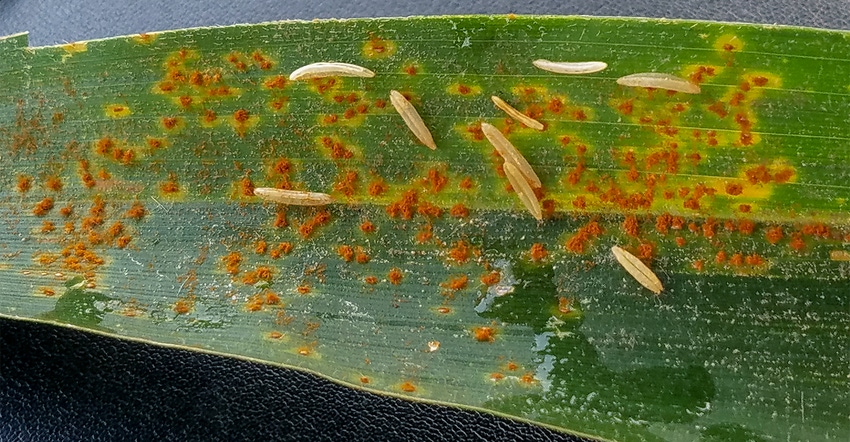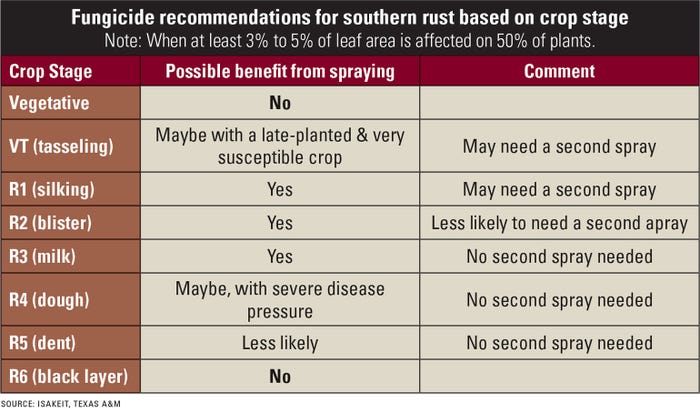
A familiar enemy lurks in cornfields across Illinois: southern rust. There are several confirmed cases, but Certified Crop Adviser Kelly Robertson cautions farmers to scout before contacting their retailers and aerial applicators. “We have several counties in southern Illinois with confirmed cases of southern rust, but hearing confirmed cases doesn’t mean it’s exploded,” he notes. “That said, it has shown up earlier than it ever has before.”
The tropical disease moves north during storm events and flourishes in heat and humidity. In 2016,
fields treated too late or not at all for southern rust cost farmers 30 to 60 bushels per acre. The recent battle with southern rust may put farmers on edge, but Robertson considers growth stage and crop conditions before applying a $30- to $50-per-acre fungicide treatment.
Positive identification is the first step, and sample testing may be required to distinguish southern rust from common rust. Common rust’s cinnamon-brown pustules are generally larger compared with southern rust’s “bright, Allis-Chalmers-orange pustules that are typically found on the upper leaves of plants,” Robertson explains.
Once the pustules are properly identified, it’s time for a management call.
Should farmers pull treatment trigger?
Fungicides offer 21 days of activity against southern rust, and farmers should try to time the application for protection up to the dent stage, Robertson explains. “You may want to wait for a more advantageous time to spray,” he notes. “Once the corn is past dent stage, we won’t lose any more yield.” (See chart below.)

Late-planted corn and replant acres run the highest risk for yield loss.
“Corn planted on June 5 is just starting to tassel,” Robertson notes. “It has a long way to go.”
Farmers should also consider the upcoming weather forecast and current crop conditions. Southern rust won’t thrive in cooler, drier conditions, and drought-stressed corn is struggling with grain fill. “If I have a field with 200-bushel-per-acre yield potential, I’m spraying it,” Robertson says. “If it looks like 50 to 100 bushels per acre, I’m not going to pull the trigger.”
Corn infected with southern rust will quickly lose stalk quality and harvestability, Robertson adds. As weather and crop conditions change from week to week, keep a close eye on fields. “You have to go out and scout all the time. During the last week to 10 days, it was really hot and humid, which is conducive for southern rust. Now it’s cooler and dry,” he notes. “Conditions can change fast.”
About the Author(s)
You May Also Like




